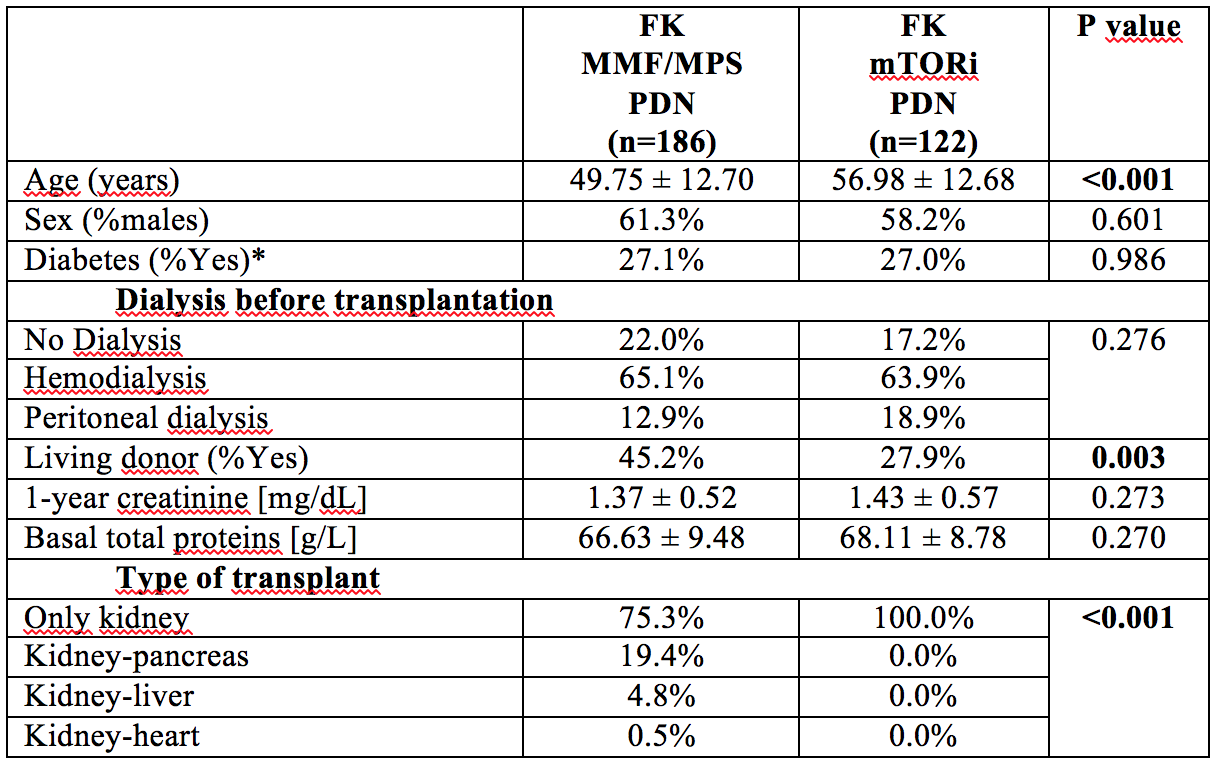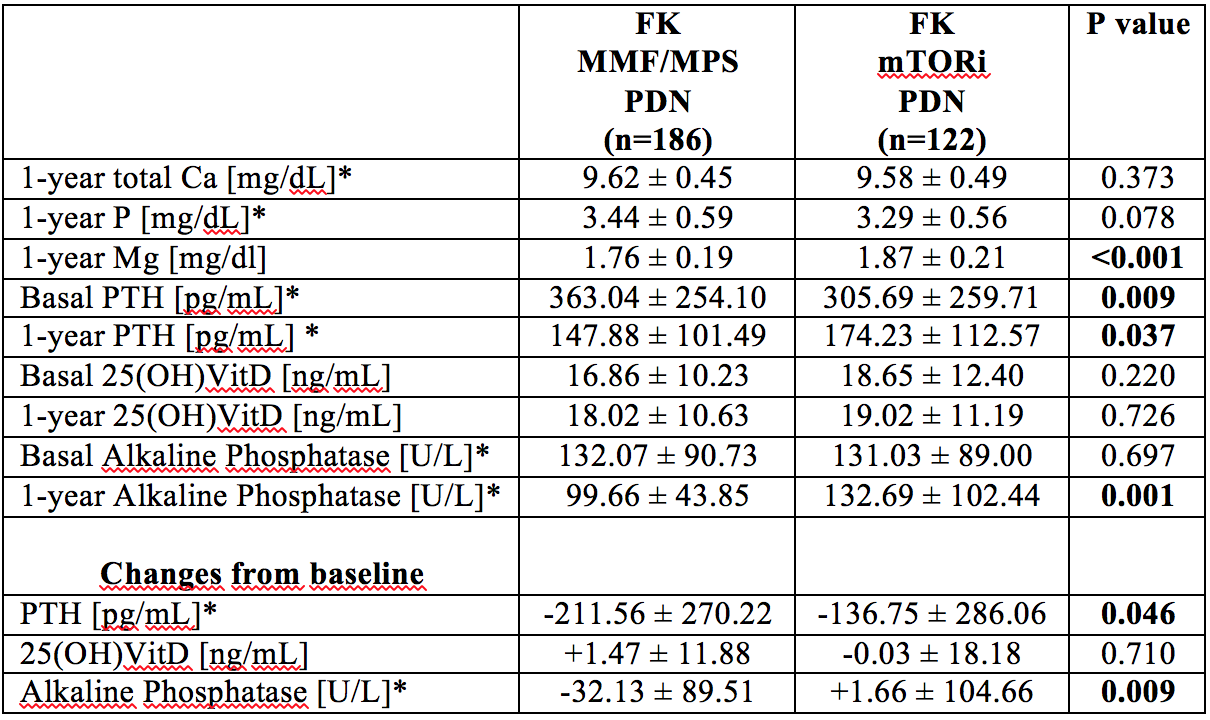The Impact of Immunosuppression on Mineral Metabolism One Year after Kidney Transplantation: Differences Between a Mycophenolate-Based Regimen Versus an mTOR Inhibitor-Based One
David Cucchiari1, Sabine Karam2, Pedro Ventura-Aguiar1, Fritz Diekmann1, Vicens Torregrosa1.
1Renal Transplant Unit, Hospital Clínic, Barcelona, Spain; 2Department of Medicine, Saint George Hospital University Medical Center, Beirut, Lebanon
Introduction: After kidney transplantation, a substantial amount of patients still suffer from Mineral Bone Disorder (MBD). However, the role of immunosuppressive therapy on mineral metabolism in transplanted patients is largely unknown. The aim of this study is to compare the effect of two common immunosuppressive schedules on MBD-related biomarkers 1 year after transplantation. Both schedules were tacrolimus- and prednisone-based and patients received either micofenolate or an mTOR inhibitor according to the ongoing protocol.
Methods: Longitudinal 1-year long retrospective study on patients transplanted from June 2013 to May 2016 at Hospital Clínic, Barcelona, who were treated continuously either with mycophenolate (MP) (n=186) or an mTOR inhibitor (mTORi) (n=122) during the first year after kidney transplantation. These two drugs were always combined with both tacrolimus and prednisone. Patients who died within the first year, lost at the follow-up, with graft failure and those who changed immunosuppression during the first year were discarded from the final analysis (25.7% of original population).
Results: Patients with the mTORi regimen were older and received more likely a graft from a cadaveric donor. There was no difference in renal function at 1 year between groups (creatinine 1.37 ± 0.52 vs 1.43 ± 0.57 for MP and mTORi group respectively, p=0.273). 
Patients who were doing mTORi experienced a less significant decrease in PTH values 1 year after transplantation (PTH -211.56 ± 270.22 pg/mL vs -136.75 ± 286.06 pg/mL for difference between 1-year and basal values in the MP and mTORi groups, respectively). Alkaline phosphatase decreased significantly in the MP group, while it did not substantially change in the mTORi group (-32.13 ± 89.51 U/L for MP vs +1.66 ± 104.66U/L for mTORi, p=0.009). There was a trend towards lower phosphate levels in the mTORi group (p=0.078), while total calcium was not affected (p=0.373).
Conclusion: an mTOR inhibitor-based regimen is associated with higher PTH and alkaline phosphatase values 1 year after kidney transplantation when compared to a mycophenolate-based regimen, along with a standard tacrolimus and prednisone immunosuppression.
